How to properly reproduce hibiscus?
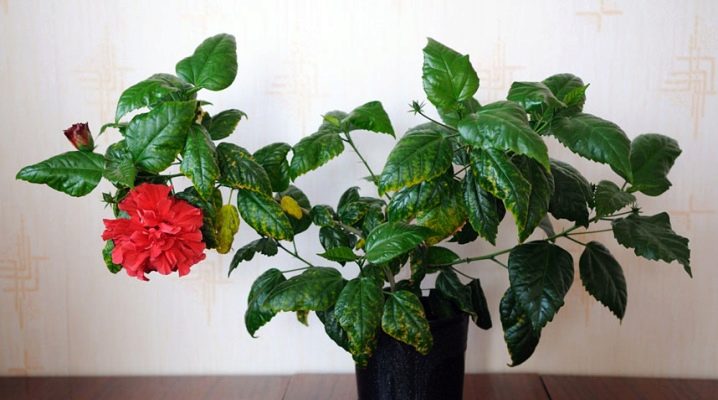
Any florist who has appreciated all the luxury of a blooming hibiscus will certainly want to grow such an extraordinary plant. Despite the fact that the tropics and subtropics are the homeland of this flower, it is not considered overly pretentious to the conditions of its maintenance. One of the simplest ways to propagate this exotic is cuttings. What nuances should be considered when intending to grow a marvelous hibiscus from a cutting?

When is the best time to propagate?
Cutting is considered the only breeding method for hibiscus that can be used at any time of the year. Even if the plant is in a dormant phase, its cuttings will root perfectly when favorable conditions are created.
At the same time, experienced florists recommend using this method from April to August, when the flower is actively developing and growing. The best month for grafting in this regard is May. At this time, plant resources are maximally mobilized, and metabolic processes are most intense. Taken together, all these factors determine a good survival rate and rooting of cuttings.
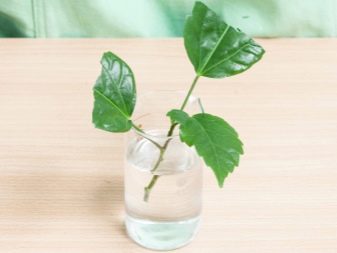

If cuttings are carried out in winter, the rooting process will be slightly slower. This is primarily due to the fact that this period is characterized by a short daylight hours, as a result of which the planting material will not be able to receive a sufficient amount of illumination.
To compensate for the lack of light, rooting cuttings are supplemented with phytolamps or fluorescent lamps.
In addition, when rooting cuttings in winter, it is necessary to provide them with suitable temperature conditions. If the room is cool, the rooting process will slow down significantly.
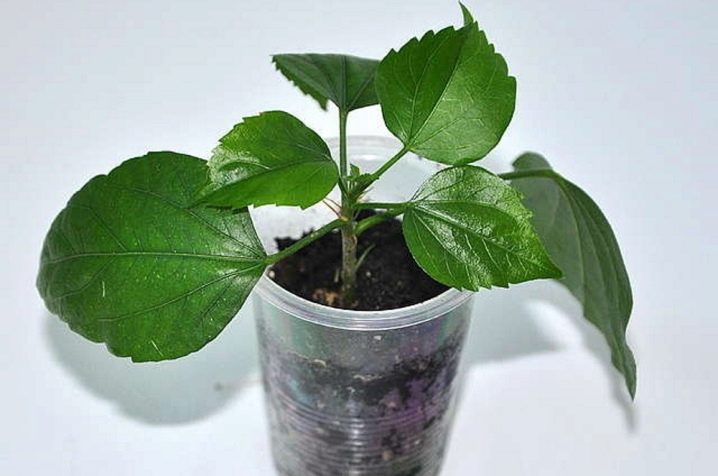
Not every indoor hibiscus is suitable for cuttings. To obtain a healthy and viable planting material, the donor plant must meet the following requirements:
- suitable age;
- well-developed crown;
- absence of diseases and traces of damage by pests.
Very young hibiscus are not recommended for use as donors, as cutting off cuttings can weaken their immune system. It is best to take cuttings from an adult and sturdy plant.

Hibiscus with a poorly developed crown are also not considered the most suitable donors. If by a certain age the plant has not managed to build up a sufficient green mass, this may indicate its weakening and insufficient potential for reproduction.
A prerequisite that must be met by a hibiscus donor is absolute health. Sick plants and plants that have recently undergone any disease are not used to obtain cuttings. It is also not allowed to use as donors and hibiscus affected by the invasion of pests. In these cases, the plants must first be thoroughly treated and given the opportunity to fully recover.

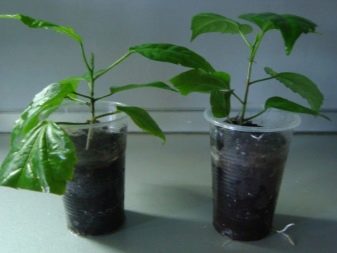
One of the indisputable advantages of propagation of hibiscus by cuttings is that this method allows you to preserve all the varietal properties of the plant. This means that if, for example, a florist decides to propagate variegated hibiscus with double flowers by cuttings, he will receive young plants from the planting material with the same characteristics as the source.
Among other advantages of the grafting method, flower growers also note that with this method of propagation, plants with a well-developed root system are obtained. Such a result is rarely achieved, for example, by growing hibiscus from seeds.
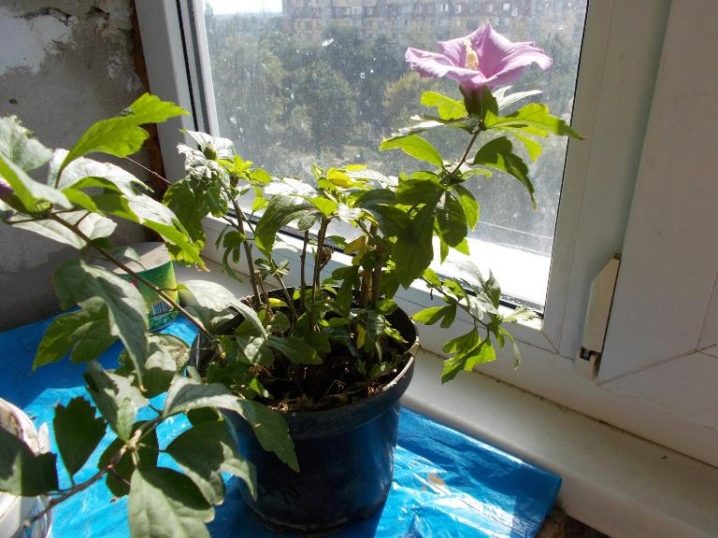
Preparation
The results of breeding hibiscus by cuttings largely depend on how correctly the preparation was carried out. At the preparatory stage, increased attention is paid to both the planting material itself and the auxiliary components: the choice of capacity, the preparation or purchase of soil mixture.
Planting material
To obtain cuttings with a high survival potential, a strong and healthy donor plant with a well-developed crown is chosen. It is desirable that the hibiscus does not bloom at this time. Experienced growers recommend cutting off the cuttings after the plant has completely faded.
For cutting, you must prepare a sharp and clean scissors, pruner or scalpel. Then a young and strong shoot with a slightly lignified stem should be found on the plant. The shoot should be about 15–18 centimeters long, with at least three internodes on it. Internodes are the gaps on the stem between the attachment points of the leaves.
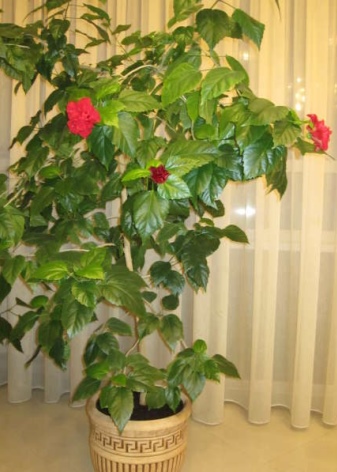
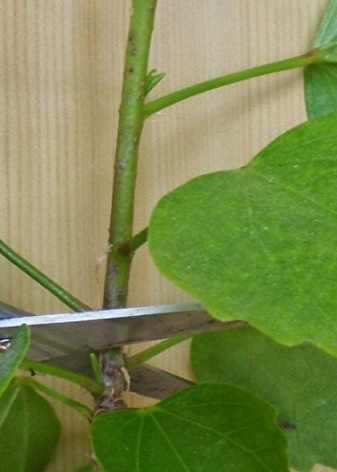
The selected shoot is cut obliquely, after which the lower leaves are removed from it. The upper leaves are cut in half to reduce the loss of evaporated moisture. The top of the shoot is shortened by cutting it at a right angle. Thus, the cutting will have an oblique cut at the bottom and a straight cut at the top.
After pruning, the stalk is placed in the lower part in a glass with a solution of a root growth stimulator. The most popular drug among flower growers used for these purposes is "Kornevin".
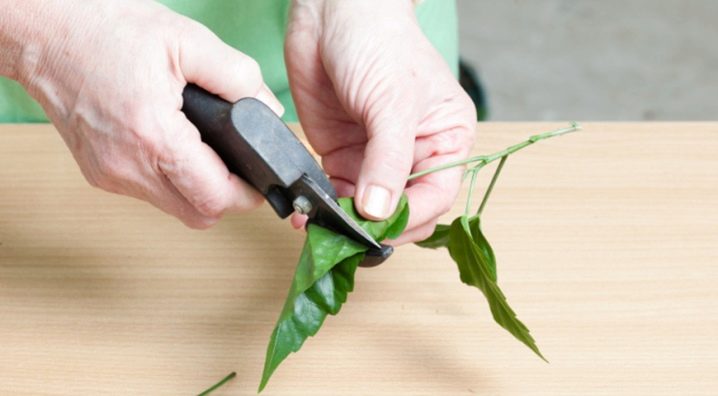
Pot
The container in which it is planned to root the planting material must be transparent. Plastic containers can be used as such a container. Containers with a lid are very easy to use.
The dimensions of the container depend on the size and number of cuttings. It is best to use large containers that are suitable both in length, width and depth. It should be borne in mind that for a Chinese rose, it is very important to have free space - both for the aboveground part and for the roots. In order for the exotic root system to develop fully in the future, the cuttings after rooting must be transplanted into a separate pot.
Before laying drainage and soil mixture, the container should be treated with a solution of potassium permanganate or boiling water, if the material of the dishes allows this. It is also required to check that there are drainage holes at the bottom of the tank for water drainage.
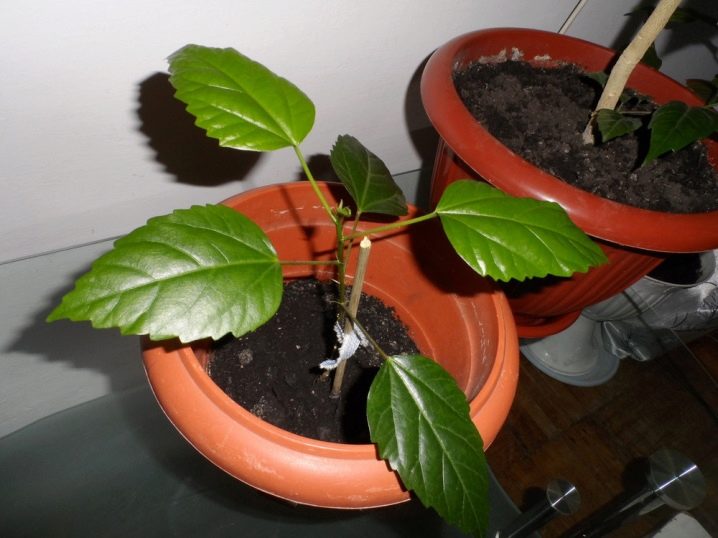
Earth
For the normal development of the root system, hibiscus cuttings need a loose and light soil rich in micro- and macroelements. These requirements are fully consistent with a soil mixture prepared from garden soil, peat and coarse river sand. Also, flower growers often use a simple mixture of peat soil and sphagnum. Rooting is often carried out in ordinary clean sand.
You can also use a fairly loose fertile soil mixture prepared from sod and leafy soil, coarse sand and humus. The proportions of the components in this mixture are 4: 3: 1: 1, respectively.
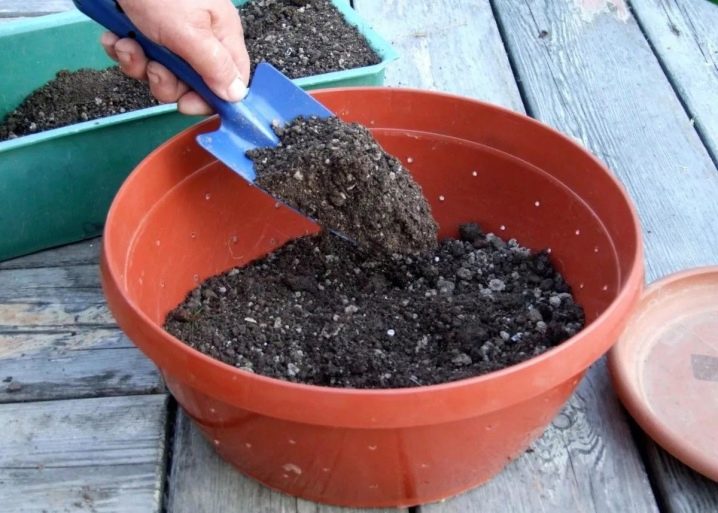
How to root?
There are several ways to root hibiscus cuttings at home. In one case, the planting material is planted in containers with soil mixture, in the other, it is simply placed in a glass of water.If, during the rooting period, the cuttings are provided with optimal conditions (the required temperature, air humidity, light, protection from drafts), then very soon they will begin to actively form the root system.
Another method involves rooting cuttings in special pressed peat tablets. These tablets contain a complex of important nutrients that a young plant needs in the early stages of development.
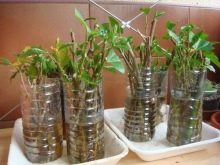
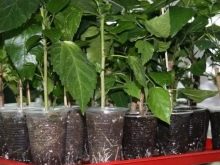
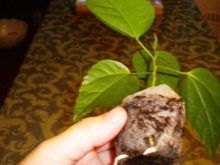
Into the ground
To root the planting material in the ground, it is necessary to lay a drainage layer on the bottom of the planting tank. Further, the container is filled with prepared soil mixture, which is recommended to be treated in advance with a solution of potassium permanganate or simply spilled with boiling water.
The stalk, which was previously in a solution of a root growth stimulator, is buried in the soil mixture for a couple of centimeters. It is allowed to place the cuttings at a slight angle. After planting, watering is carried out and the container is closed with a lid, which will prevent moisture evaporation.
Instead of a lid, you can put a plastic bag on the container, making sure that it does not crush the cuttings. In most cases, flower growers use jars and cut plastic bottles that cover the planting material.
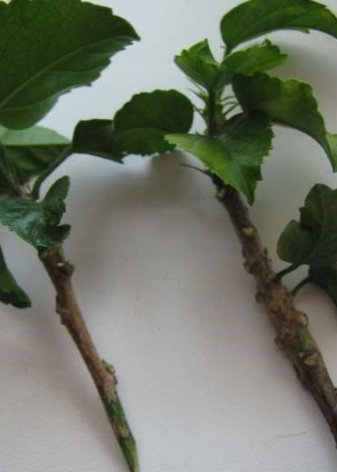

The cuttings should be ventilated and watered regularly. The need for the next watering can be guessed by the drying surface of the soil mixture. It is important that during the rooting period in the room and in improvised greenhouses, the temperature is maintained at + 23-24 °.
Condensation must not accumulate on the inner walls of a can, bottle or bag. If this happens, the moisture should be shaken off or wiped off with a dry, clean cloth. Otherwise, condensation can lead to decay of the planting material.
Root formation with this propagation method usually occurs within a month and a half. Further, the rooted cuttings can be planted in separate pots.
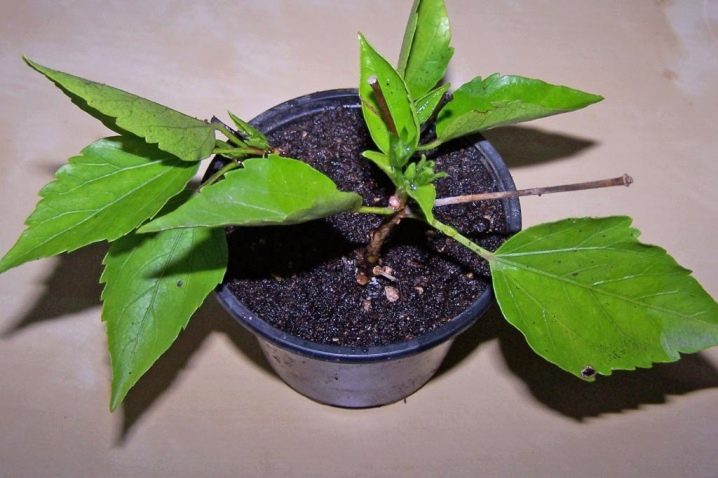
In water
This method allows you to grow a full-fledged plant from a shoot with a minimum of labor. To do this, in an opaque glass with settled water, dilute a drug that stimulates the formation of roots ("Kornevin"), and add a crushed tablet of activated carbon. Crushed charcoal will disinfect the water and protect the lower cut from rotting.
The top of the glass is covered with a cut plastic bottle, which will prevent moisture evaporation and ensure a constant air temperature. The cap is regularly removed and the rooting stalk is ventilated. As evaporation proceeds, fresh settled water is added to the glass.
During the rooting period, the cutting should receive a sufficient amount of light. To do this, a glass with planting material is placed on the windowsill, having previously protected the plant from direct sunlight.
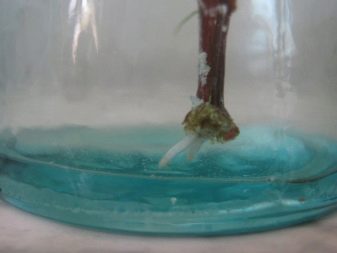
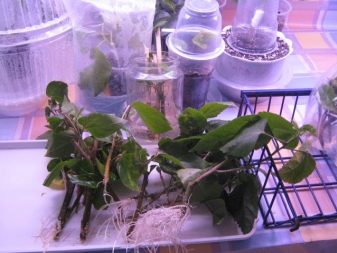
For light shading, use a newspaper, curtain or special film.
The formation of roots with this method of reproduction occurs within a month. When the length of the roots reaches 5-6 centimeters, the plant is transplanted into a separate pot with nutritious and loose soil mixture.
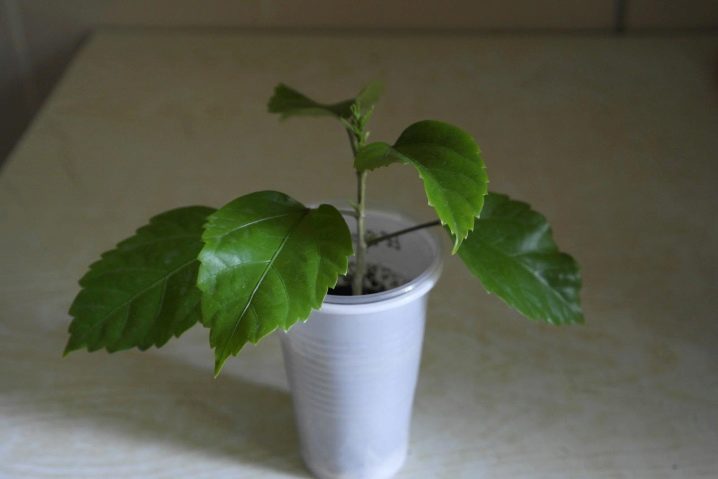
In peat tablets
In order to root the stalk in a peat tablet, you need a small glass. A little drainage is poured onto its bottom, a tablet is placed on top and filled with water. When the tablet is soaked, the handle is carefully placed in it, deepening its lower end by a couple of centimeters. Pre-planting material is kept in a solution of a rooting stimulator.
From above, a glass with a handle is covered with a transparent cap from a cut plastic bottle. As the tablet dries, water is regularly poured into the glass.
When choosing one or another method for propagating hibiscus by cuttings, it should be borne in mind that the least reliable method is considered to be the germination of roots in water. According to flower growers, in plants whose rooting took place in a substrate or peat, the root system is characterized by higher strength and endurance... When rooting in water, the elongating young roots do not encounter any obstacles in their path, as a result of which they become fragile and vulnerable.

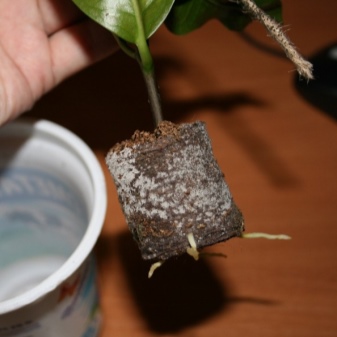
Care advice
In order for a young plant obtained from a cuttings to fully develop and grow, it is important for it to create comfortable living conditions. This implies compliance with the following requirements:
- sufficient illumination;
- optimal temperature conditions;
- sufficient air humidity;
- timely watering;
- top dressing;
- prevention of pests and diseases.

Lighting
After rooting, young hibiscus is placed in a well-lit place (on a windowsill, a heated balcony), while excluding direct sunlight on its leaves. Moderate diffused light is considered the most comfortable for these delicate exotics.
Given that hibiscuses always stretch towards the sun, the plant pot should be rotated regularly. This will allow the crown to develop evenly and proportionally.
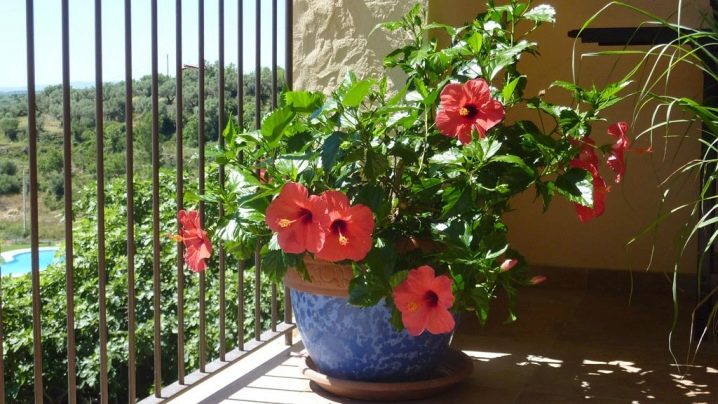
Temperature regime
Tropical origin causes increased temperature requirements for hibiscus. Best of all, these exotics feel at a stable air temperature of about 21 ° in summer and 15 ° in winter. Changes in temperature, cold snap and drafts are detrimental to these plants, since they cause a sharp decrease in their immunity and, as a result, the development of diseases.
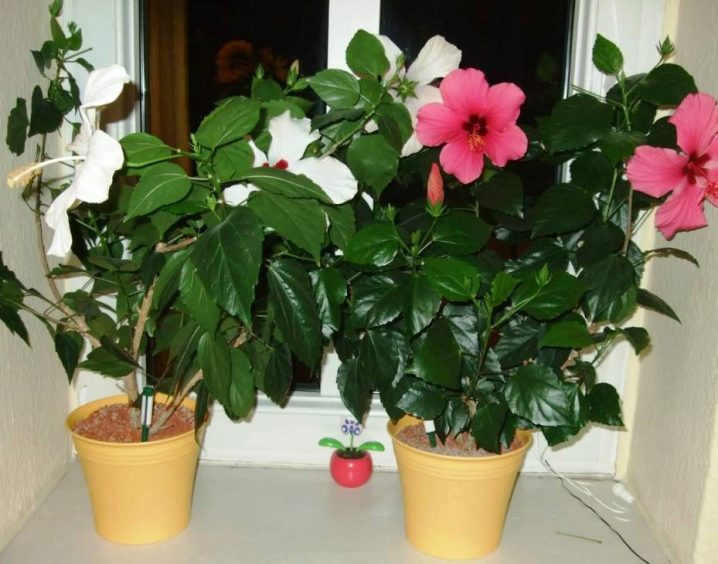
Sufficient air humidity
The tropics and subtropics are zones in which high humidity constantly reigns. It is necessary for rooting cuttings, for young and adult plants. For hibiscus to feel comfortable, it needs regular spraying. When carrying out this procedure, it is important to ensure that no water gets on the buds and flowers that are forming. Household humidifiers, as well as wide containers of water installed next to the pots, will provide constant air humidity.
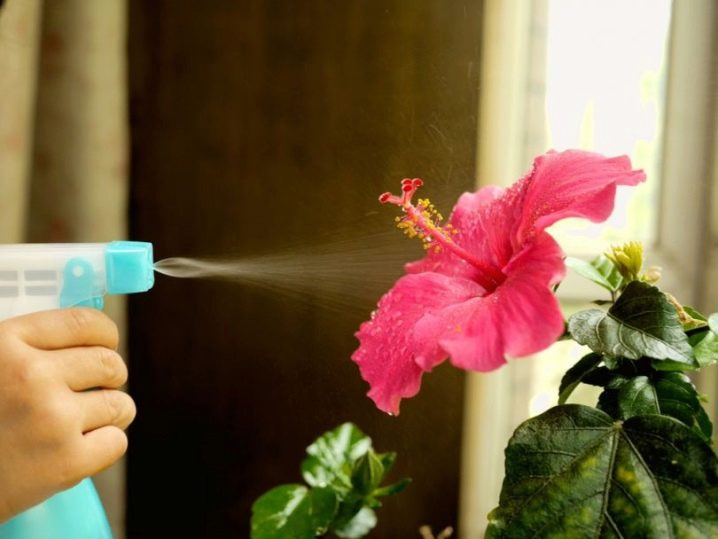
Timely watering
Typical of the tropics, hibiscus does not tolerate drought. It is necessary to water it regularly, making sure that the soil mixture in the pot does not dry out. However, an excess of moisture in the substrate must not be allowed, otherwise it can cause root rot.
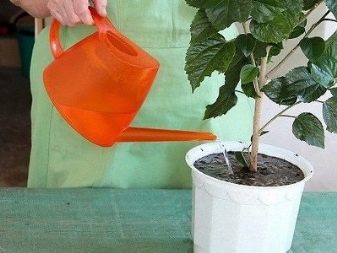
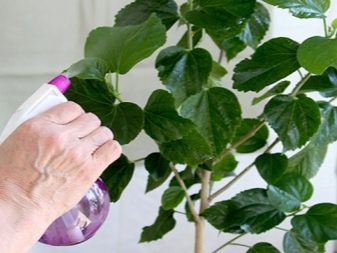
Top dressing
Young plants that have entered the phase of active growth and development require a lot of resources. To give them additional strength, top dressing is used.
If you cannot find a special fertilizer for hibiscus on sale, you can feed the plants with nitroammophos (6-7 grams per 1 liter of water) or "Biohumus".
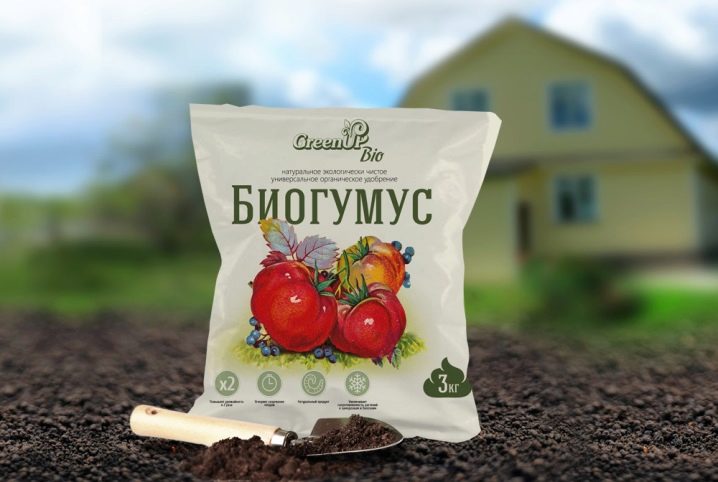
Prevention of pests and diseases
It is very important to protect young plants grown from cuttings from diseases and pests. For prevention purposes, young hibiscus are regularly examined, and newly acquired plants are temporarily isolated from the rest. Both the store substrate and the components of the soil mixture for do-it-yourself preparation should be checked.
Often, poor-quality soil becomes a source of plant infection.
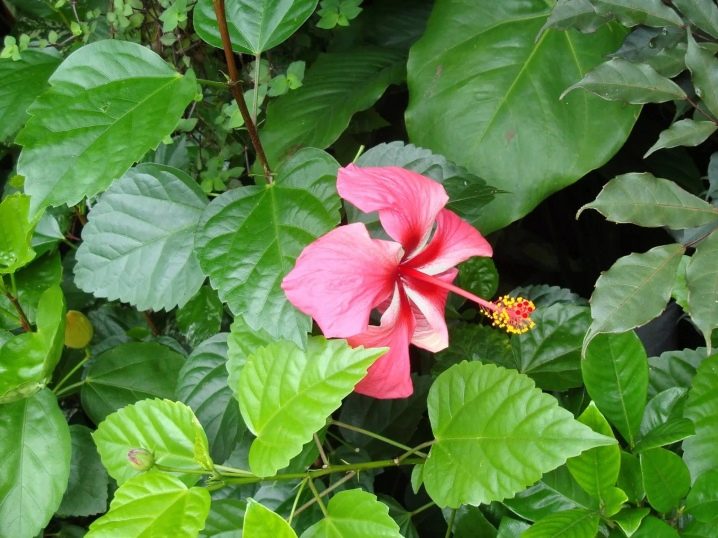
What if the plant does not take root?
It often happens that a rooted stalk after transplantation begins to wither, shed leaves and hurt. This signals that its root system is weak or damaged. In this case, grafting should be repeated, since such specimens are rarely viable.
Often, young plants obtained by rooting cuttings become victims of pathogens or pests. Some growers attribute this to the fact that many young hibiscus sometimes lack the strength (immunity) to resist the invasion of parasites. In this case, it is necessary to diagnose the problem in a timely and accurate manner, and then carry out competent and comprehensive treatment.
Compliance with the rules of care can significantly increase the chances of plant survival after rooting. Combined with the care of the grower for green pets, complete care will ensure their healthy development and abundant flowering.
For information on how to properly carry out cuttings of hibiscus, see the video below.






























The comment was sent successfully.